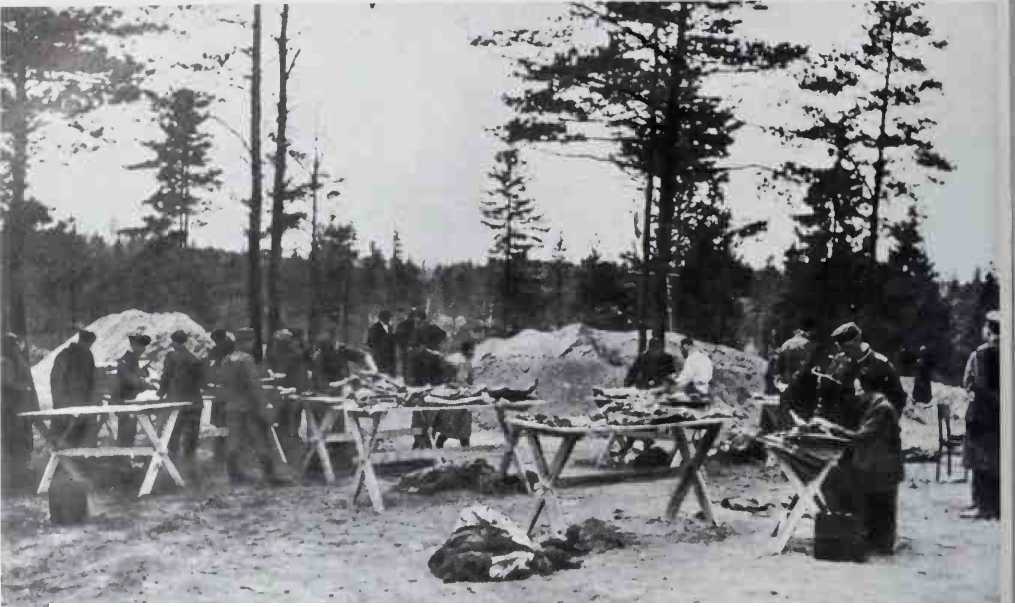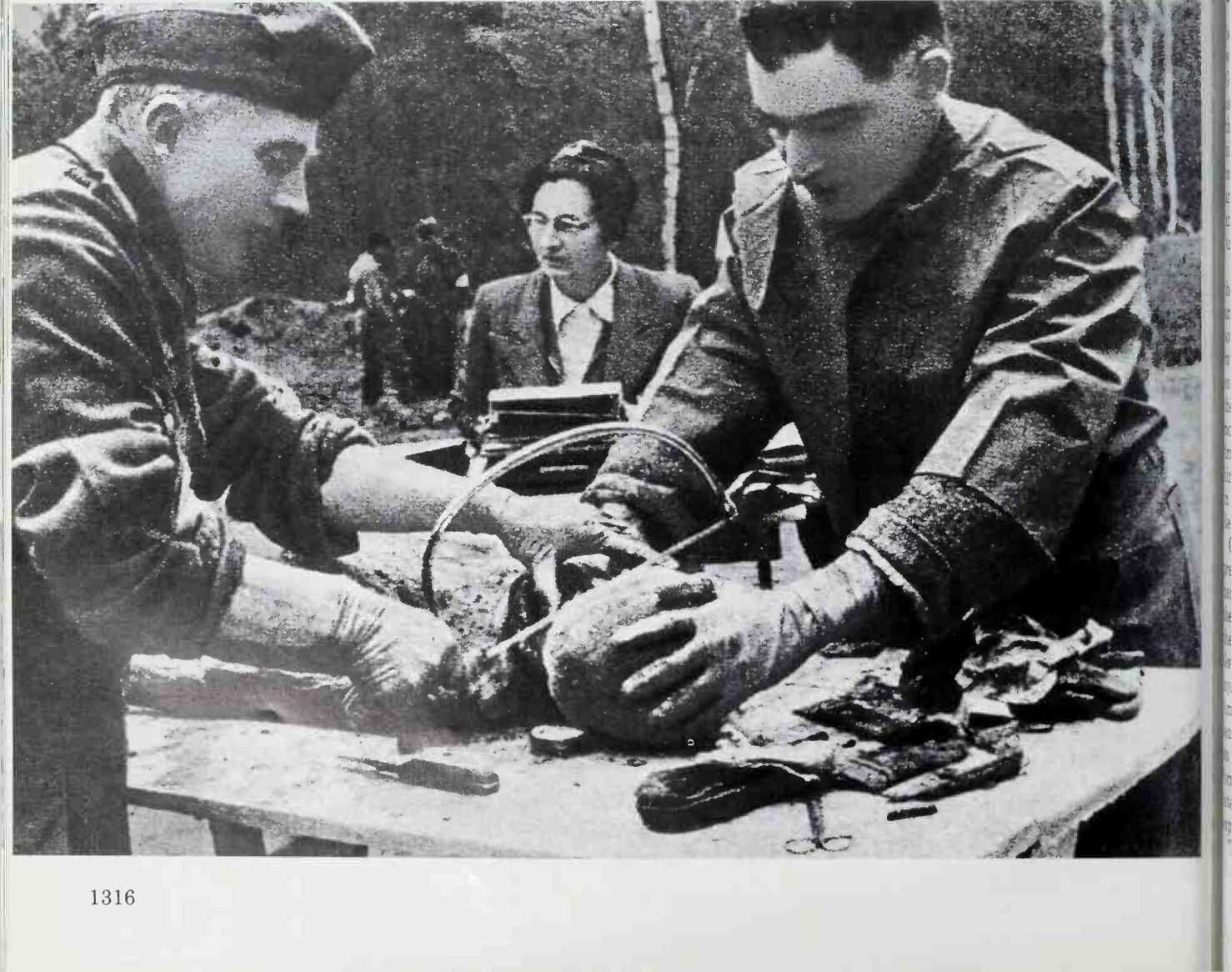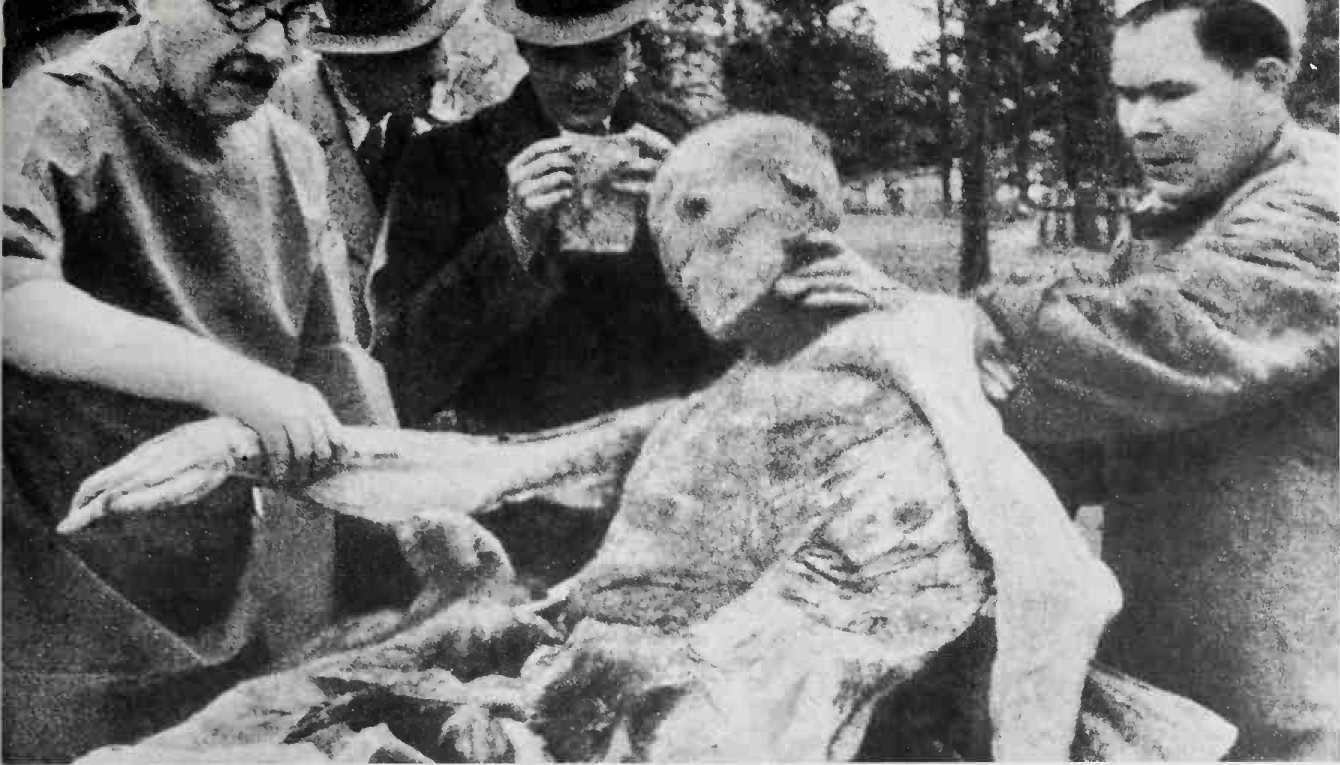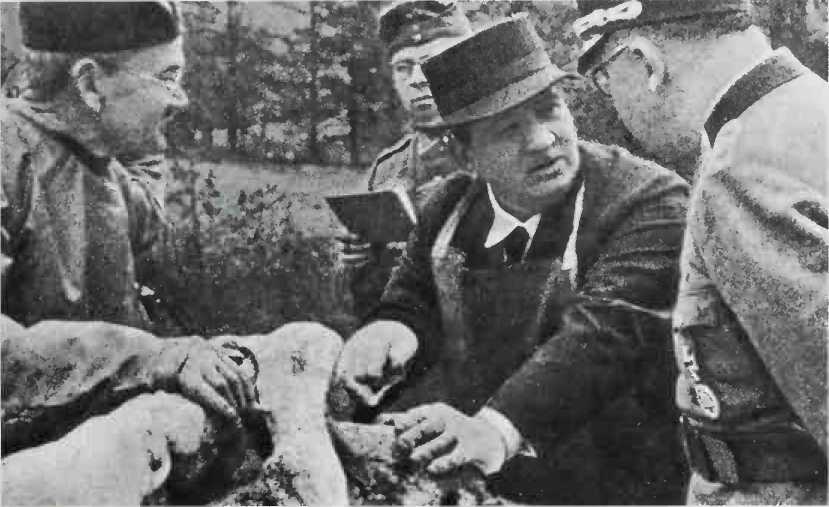At this point, should the ghastly charnel-house of Katyn be recalled? Here, six miles west of Smolensk, on April 13, 1943 the Germans found piled up 12 deep, the mummified bodies of 4,143 Polish officers, all felled by pistol shots in the back of the neck. It has been maintained that when the British and Americans learned of this example of Stalinist ferocity, they should have taken clear warning and had their eyes fully opened to the real nature of Soviet domination. Examination of the facts and the evidence require some modification of this opinion, however.
In fact, at the time neither Churchill nor Roosevelt had sufficient evidence to make a firm judgement as to Soviet responsibility for the affair. Stalin was.
Of course, quick to issue a denial of German claims, and whatever their suspicions about the Russian dictator, Churchill and Roosevelt had direct evidence of many Nazi atrocities, of which Katyn might well be another. Yet certainly, neither believed Stalin’s grossest lies, such as when he told them on April 21, 1943, that Moscow was breaking off relations with the Polish Government-inExile. The terms used merit quotation: "The fact that the anti-Soviet campaign has been started simultaneously in the German and Polish press and follows identical lines is indubitable evidence of contact and collusion between Hitler-the Allies’ enemy-and the Sikorski Government in this hostile campaign.
"At a time when the peoples of the Soviet Union are shedding their blood in a grim struggle against Hitler’s Germany and bending their energies to defeat the common foe of freedom-loving democratic countries, the Sikorski Government is striking a treacherous blow at the Soviet Union to help Hitler’s tyranny.”
It seems likely that Churchill never
> The international eommittee at work, examining the personal effects found on the bodies.

V Professor Palrnicri of Naples dissects a skull. He found that three bullets had been fired into the nape of the neck.



A A A body is carefully stripped of its clothing. Professor Hajek of Prague examines documents found in the pockets.
A Professor Milosavic of Zagreb tells Professor Buhtz, superintendent of the excavations, of his findings: death by shooting in the neck. Overleaf: One of the seven mass graves at Katyn is exposed. The biggest was found to contain 2,500 bodies in a row, stacked in fivelayers.
Believed the Moscow version of the facts, which blamed the mass murder on the Germans. Perhaps it was the indignation caused by his conclusions on the massacre that was one of the motives which caused him to change his mind on the chances of co-operation between the Stalinist East and the Democratic West. But in the final analysis it had no influence on Anglo-American discussions.
President Roosevelt was the arbiter of the situation, and the many reports which arrived on his desk from the most reliable sources concerning the crimes perpetrated by the Nazis in most of the occupied countries led him to lay the massacre of the Polish officers at their door. Furthermore, perhaps his opinions were confirmed by a report on the massacre sent to him by Averell Harriman, his Ambassador in Moscow, on January 25,1944, after the Red Army had retaken Smolensk.
On January 15, British and American press correspondents stationed in Moscow had travelled to Katyn to And out for themselves the conclusions reached by the committee appointed by the Soviet Government to clarify this frightful mystery and to hear some witnesses. The American Ambassador was permitted to send his daughter as one of his aides and, on the basis of her information, he formed his opinion. The prudence and intentional vagueness with which he expressed himself is noteworthy:
"None of the members of the group”, he wrote to the State Department, "was qualified to judge the scientific evidence deduced by the autopsies carried out in their presence. They were not allowed to make personal enquiries but they could address definite questions to certain witnesses with whom they were confronted.
"The correspondents made reports on what they had seen without expressing any personal opinion but for some reason the censor withheld their report. The proofs and evidence are not very conclusive but Kathleen [his daughter] and the representative of the Embassy believe that the massacre was probably committed by the Germans.”
This was followed by factual appendices supporting this opinion, assembled by Miss Harriman. She, however, recognised frankly and without restraint that they were not very consistent when, as Mrs. Mortimer, she gave evidence on November 12, 1952 before the Investigating Committee of the House of Representatives.
It has also been said that, towards the end of his life, Roosevelt no longer believed that the Katyn massacre had been perpetrated by the Germans. Nevertheless, for evident reasons, he was no more able than Churchill to make a public declaration on the matter.




 World History
World History









